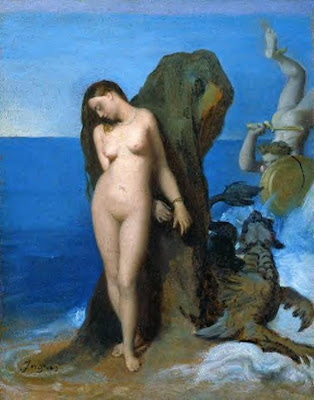A man profoundly respectful of the past, he assumed the role of a guardian of academic orthodoxy against the ascendant
Romantic style represented by his nemesis
Eugène Delacroix. His exemplars, he once explained, were "the great masters which flourished in that century of glorious memory when
Raphael set the eternal and incontestable bounds of the sublime in art ... I am thus a
conservator of good doctrine, and not an
innovator."
Nevertheless, modern opinion has tended to regard Ingres and the other Neoclassicists of his era as embodying the Romantic spirit of his time,
while his expressive distortions of form and space make him an important precursor of
modern art.
 |
| The Turkish Bath, 1863 |
 |
| The Bather of Valpinçon, 1808 |
 |
| Jupiter and Thetis, 1811 |
 |
| Angelica in Chains, 1818-1859 |
 |
| The Grande Odalisque, 1814 |
 |
| Odalisque with Slave, 1842 |
 |
| Half-figure of a Bather, 1807 |
 |
| Jupiter and Antiope, 1851 |
 |
| Perseus and Andromeda |
 |
| The Small Bather, 1828 |
 |
| The Source, 1856 |
 |
| Venus Anadyomene, 1848 |
 |
| Venus at Paphos |
 |
| Male torso, c.1800 |
 |
| Male nude, 1801 |
 |
| Naked woman lying on a rock |
 |
| Study of the naked holy Isabella of France |
Tìm hiểu thêm về tác giả:
.


















Không có nhận xét nào:
Đăng nhận xét